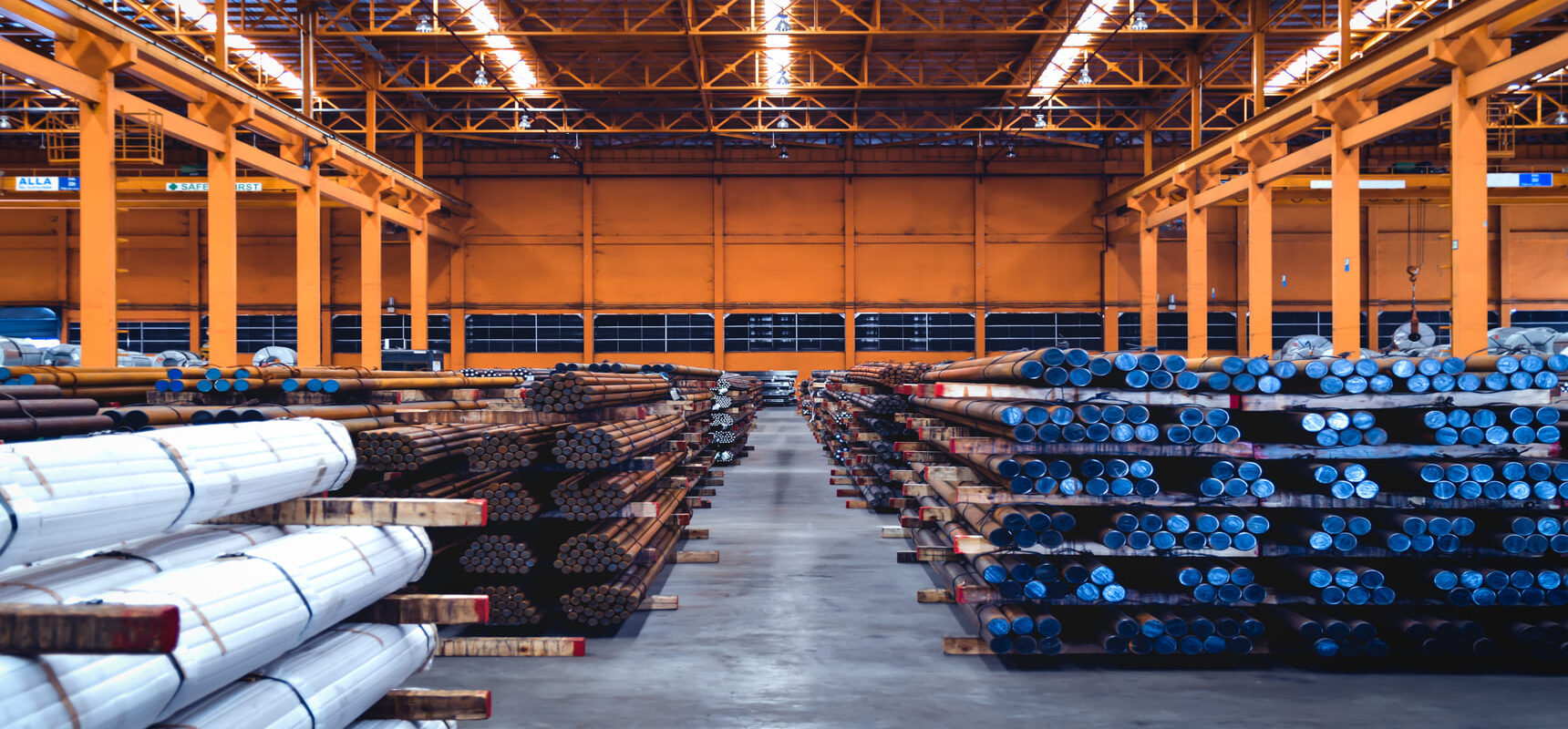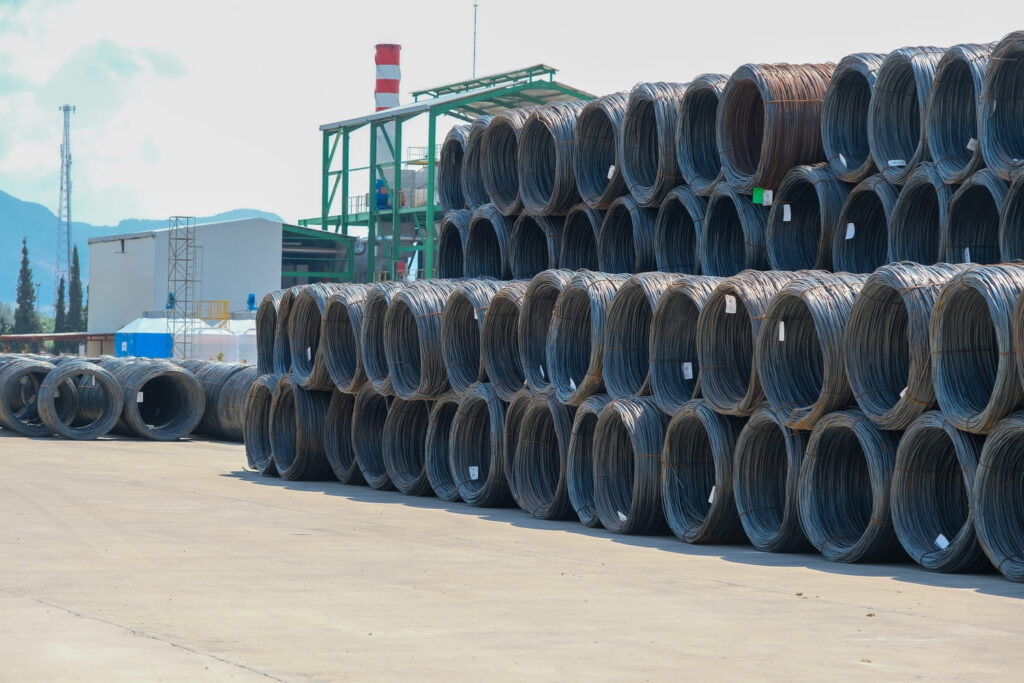Essential Guide to Industrial Warehousing: Key Features, Technologies & Challenges

Industrial warehousing plays a pivotal role in the global supply chain, ensuring the efficient storage, management, and distribution of goods. Businesses—from manufacturers to retailers—rely on industrial warehouses to streamline logistics and maintain a steady flow of products to market. In this blog, we explore the different types of industrial warehouses, and the key factors to consider when selecting the right warehouse for your business.
What is an Industrial Warehouse?
An industrial warehouse is a large facility designed to store a wide range of products, from raw materials to finished goods. These warehouses are equipped with specialized infrastructure tailored to their respective industries, ensuring efficient handling, storage, and distribution.
Key Differences Between Industrial Warehouses and Other Types of Warehouses
Industrial warehouses are built to handle heavy-duty storage, large-scale manufacturing, and logistics operations. They feature reinforced floors, high ceilings, cranes, and heavy-duty forklifts, making them suitable for storing raw materials, machinery, and bulk goods.
How industrial warehouses differ from other warehouse types:
- Distribution Centers: Focus on fast-moving inventory and quick shipments.
- Cold Storage Warehouses: Maintain temperature-sensitive products like food and pharmaceuticals.
- Bonded Warehouses: Store imported goods under customs control.
- E-commerce Warehouses: Prioritize automation for fast order fulfillment.
Industrial warehouses are essential for large-scale production and supply chain operations that require durable infrastructure and specialized equipment.
Technologies Transforming Industrial Warehousing
Industrial warehouses have significantly evolved with technology, improving efficiency, accuracy, and security. The following are some of the most impactful technologies shaping modern warehousing:
1. Warehouse Management Systems (WMS)
WMS software tracks inventory, optimizes order processing, and streamlines shipment preparation. It integrates with Enterprise Resource Planning (ERP) systems to provide real-time stock updates and order status, ensuring seamless operations.
2. Automated Storage and Retrieval Systems (AS/RS)
AS/RS utilizes robotic systems for automated inventory storage and retrieval, maximizing space efficiency and reducing human intervention. This technology enhances warehouse capacity and speeds up order fulfillment.
3. Internet of Things (IoT) Sensors
IoT devices connect warehouse equipment, providing real-time data on inventory levels, machine performance, and environmental conditions. This improves predictive maintenance, reduces waste, and enhances operational transparency.
4. Autonomous Mobile Robots (AMRs) & Automated Guided Vehicles (AGVs)
Robots are increasingly used in warehouses to handle repetitive tasks like picking and packing. AMRs can transport goods across the warehouse, reducing labor costs and improving workflow efficiency.
5. Augmented Reality (AR) for Warehouse Workers
AR technology provides visual instructions for employees, guiding them on where to pick and store items. This improves picking accuracy, speeds up order processing, and enhances worker efficiency.
6. Drones for Inventory and Surveillance
Drones conduct rapid stocktaking and security monitoring, collecting precise data on inventory levels and potential risks. They offer a faster, more cost-effective alternative to manual cycle counting.
Key Uses of Industrial Warehouses
Industrial warehouses are essential for business operations, serving as the backbone of logistics and supply chain management. They facilitate critical processes such as goods receipt, internal transport, handling, conditioning, and storage. Optimizing warehouse space utilization and internal organization can have a significant impact on overall business efficiency and cost savings.
- Storage
Warehouses accommodate raw materials, semi-finished products, and finished goods in a controlled and systematic manner. Storage can be:- Short-term – Quick inventory turnover for fast-moving goods.
- Medium-term – Holding goods for seasonal demand or distribution schedules.
- Long-term – Extended storage for bulk inventory or slow-moving products.
- Material Handling
This includes essential warehouse operations like loading, unloading, order picking, and product transfers. Advanced Warehouse Management Systems (WMS) enhance stock control and ensure real-time traceability, reducing errors and improving efficiency. - Order Consolidation
Warehouses play a crucial role in sorting, organizing, and classifying items before shipment. This process:- Reduces transport costs by optimizing vehicle loads.
- Expedites product delivery through efficient inventory planning.
- Ensures accurate shipments by minimizing order errors.

Types of Industrial Warehouses
Distribution Centers – These warehouses store products temporarily and facilitate quick shipping to retailers or customers, often equipped with cross-docking for rapid movement.
Fulfillment Centers – Mainly used for e-commerce, these warehouses store inventory, process orders, and ship products directly to customers.
Cold Storage Warehouses – Designed for perishable goods like food, pharmaceuticals, and chemicals, they maintain controlled temperatures, including refrigerated and frozen storage.
Bonded Warehouses – These facilities store imported goods before customs duties are paid, commonly used in international shipping and trade.
Hazardous Materials Warehouses – Built to store chemicals, flammable materials, or toxic substances, they follow strict safety and environmental regulations.
Manufacturing Warehouses – These combine production and storage, allowing for assembling, packaging, and shipping in the same location.
Raw Materials Warehouses – Used to store raw materials like metal sheets, lumber, or textiles, often located near manufacturing facilities.
Showroom Warehouses – Combining storage and retail, these warehouses serve as display spaces for items like furniture and automobiles.
Flex Warehouses – Featuring both office and storage space, these warehouses are ideal for small businesses needing workspace and inventory storage.
Specialized Warehouses – Designed for industries like aerospace, automotive, or electronics, these warehouses may include heavy-duty racks, cranes, or specialized climate control.
How to Choose the Right Industrial Warehouse Space
Selecting the appropriate industrial warehouse space is a critical decision for businesses. Several factors should be considered to ensure that the chosen facility meets the company’s needs and supports its operations effectively. Making the right choice can enhance operational efficiency, reduce costs, and improve customer satisfaction. Here are some key considerations when choosing an industrial warehouse:
1. Location & Accessibility
- Proximity to ports, railroads, highways, and distribution centers
- Ease of access for trucks and heavy equipment
- Availability of cross-docking and transloading services
2. Storage & Handling Capabilities
- Capacity for bulk, oversized, or temperature-sensitive goods
- Specialized equipment like cranes, forklifts, and pallet racks
- Compliance with industry standards for food-grade or hazardous materials
3. Technology & Inventory Management
- Warehouse Management System (WMS) for real-time tracking
- Integration with supply chain and logistics software
- Automated processes for accuracy and efficiency
4. Flexibility & Scalability
- Ability to handle seasonal fluctuations and changing demand
- Short-term and long-term storage options
- Customizable solutions for different industries
5. Cost & Service Transparency
- Competitive pricing with clear fee structures
- No hidden costs for handling, storage, or additional services
- Scalable pricing models based on usage
6. Security & Compliance
- 24/7 surveillance and secure access controls
- Compliance
- with OSHA, FDA, and other industry regulations
- Fire suppression and disaster recovery plans
7. Value-Added Services
- Kitting, labeling, and packaging options
- Freight consolidation and order fulfillment
- Reverse logistics and disposal warehousing
8. Reputation & Experience
- Proven track record with reliable customer reviews
- Experience in handling specific industry needs
- Strong network of transportation and logistics partners
Key Challenges in Industrial Warehousing
Industrial warehousing faces several challenges that can impact efficiency and productivity. Some of the most common difficulties include:
- Labor Shortages
The demand for skilled workers in warehousing is high, making it difficult to attract and retain qualified employees. This can lead to reduced efficiency and lower productivity. - Inventory Management Complexity
Managing large volumes of stock while keeping inventory accurate is a major challenge. Poor inventory control can result in stockouts, excess inventory, and supply chain inefficiencies. - Supply Chain Disruptions
Unexpected events such as natural disasters, political instability, and global pandemics can disrupt operations, leading to delays, increased costs, and inefficiencies. - Technology Integration
As automation, robotics, and AI become more prevalent, warehouses must invest in new technologies to stay competitive. However, implementing these innovations requires significant time, money, and training. - Environmental Sustainability
There is growing pressure to minimize the environmental impact of industrial warehousing. This includes energy efficiency, water conservation, and reducing greenhouse gas emissions. - Regulatory Compliance
Warehouses must adhere to strict safety, environmental, and labor regulations. Non-compliance can lead to fines and reputational damage. - Space Constraints
Finding suitable warehouse space is becoming increasingly difficult due to urbanization and changing land use patterns. Limited space can restrict operations and increase costs.
Conclusion
In conclusion, industrial warehouses are essential components of the modern supply chain, providing the infrastructure needed to store and distribute goods efficiently. As businesses continue to evolve and adapt to changing market conditions, industrial warehousing will remain a vital part of their operations, driving growth and success in the years to come. By embracing technological advancements and sustainability initiatives, warehouses can continue to meet the demands of the future, ensuring their relevance and impact in the global economy.
OLIMP Warehousing is dedicated to matching businesses with the best warehouse solutions quickly and easily. Whether you’re searching for “industrial warehousing near me” or “industrial storage,” OLIMP is here to guide you. With our expertise, you can rely on us to find the perfect warehouse tailored to your needs for specialized storage. Let OLIMP simplify your warehouse search and ensure your business thrives.
You may be interested in

The Importance of Pharmaceutical Warehouse Management
Pharmaceutical warehouse management is crucial for preserving the integrity, safety, and efficiency of the entire supply chain. It requires meticulous organization in storage, handling, and distribution to ensure that medicines and healthcare products arrive at hospitals, pharmacies, and patients in optimal condition. Effective management prevents delays, ensures regulatory compliance, and protects public health by adhering […]

4PL Logistics: The Ultimate Guide to Fourth-Party Logistics
In today’s fast-paced, globalized supply chain landscape, businesses need more than just logistics execution—they need strategic supply chain optimization. That’s where Fourth-Party Logistics (4PL) comes in. Unlike traditional 3PL (Third-Party Logistics). which focuses on specific functions like warehousing or transportation, a 4PL provider acts as a single integrator, managing the entire supply chain while leveraging […]

Why Choose Intermodal Drayage Services for Your Logistics
Efficient goods movement is essential in logistics, and intermodal drayage services play a key role in this process. Despite their importance, these services are often misunderstood or overlooked. This article explores what intermodal drayage entails, its benefits, and how it compares to other transportation methods. Definition of Drayage in Logistics Drayage is the transport of […]